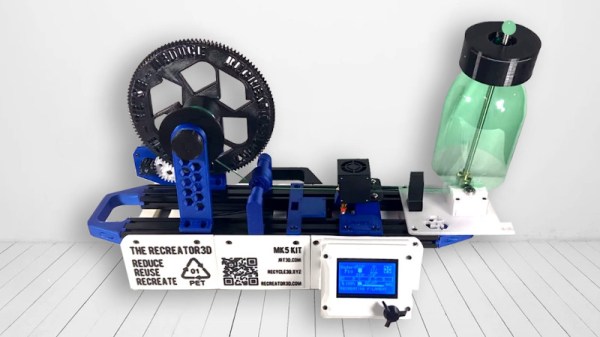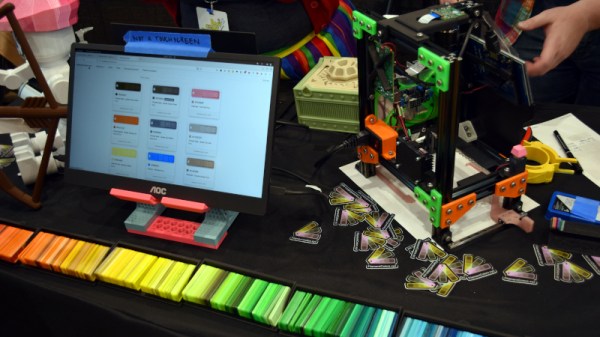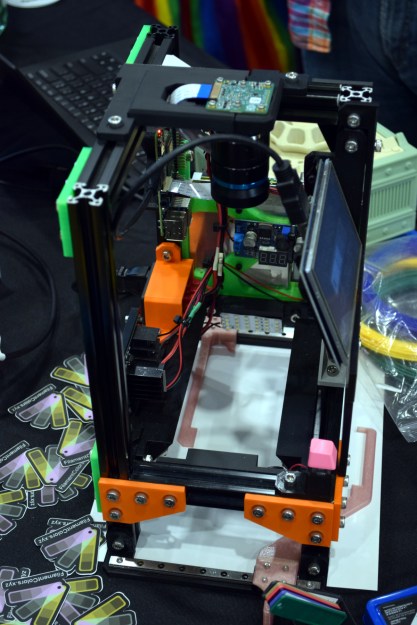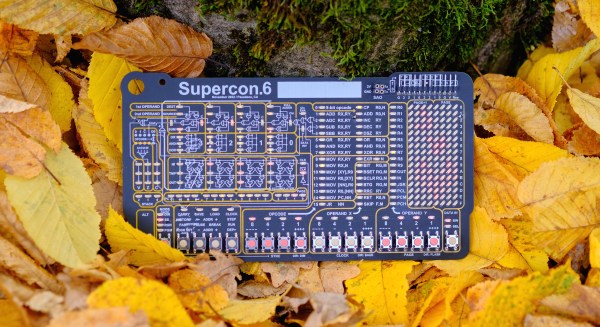In Back to the Future, Doc Brown returns to 1985 with a version of his DeLorean time machine that has been modified with technology from the future. After telling Marty they need to go on yet another adventure, Doc recharges the DeLorean’s flux capacitor and time circuits by tossing pieces of garbage into the slick Mr. Fusion unit mounted to the rear of the vehicle. The joke being that, in the future, you could simply head over to the local big box store and pick up a kitchen appliance that’s capable of converting waste matter into energy.
Unfortunately, we’re nowhere near powering our homes with banana peels and beer cans. But if the Recreator 3D is any indication, the technology required to turn plastic bottles rescued from the trash into viable PET filament for your 3D printer is all but upon us. While there are still some aspects of the process that could stand to be streamlined, such as fusing multiple runs of filament together into one continuous roll, the core concepts all seem to be in place.

Creator [Josh Taylor] made the trip out to the 2022 East Coast RepRap Festival to not only show off the Recreator 3D, a project he’s been working on now for over a year, but to get people excited about the idea of turning waste plastic into filament. It’s not necessarily a new concept, and in fact [Josh] says earlier efforts such as the PETBOT are what inspired him to create his own open source take on the “pultrusion” concept.
According to [Josh], actually printing with the recycled filament isn’t that different from using commercial PETG, though it’s recommended you lower your speeds. A nozzle temperature of around 260 °C seems to work best, with the bed at 70 °C. Interestingly, the filament produced by the process is actually hollow inside, so the most critical change to make is increasing your extrusion rate to about 130% of normal to compensate for the internal void.
The current revision of the Recreator 3D, known as the MK5Kit, can be assembled using several core components salvaged from a low-cost Ender 3 printer in addition to a number of parts that the user will need to print themselves. For those who’d rather not source the parts, [Josh] says he hopes to get formal kits put together sometime next year, thanks to a partnership with LDO Motors.
But ultimately, [Josh] says the most important thing to him is that the plastic is recycled instead of getting sent to a landfill or incinerator. So whether you build a Recreator 3D or come up with your own design, all are welcome to the PET Pultruders United Facebook group he’s created to discuss the finer points of turning plastic trash into treasure.
Continue reading “ERRF 22: Recreator 3D Turns Trash Into Filament”


















